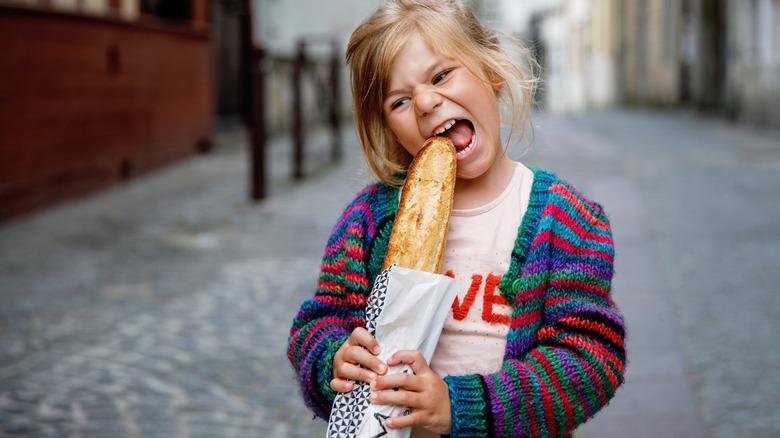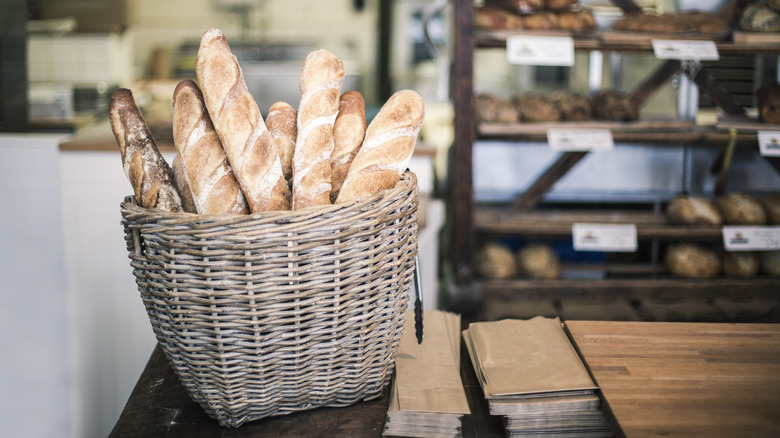There's A Trick When Ordering Baguettes In France To Blend In With Locals
Blending in with the locals in France is less about trying to master the accent and more about understanding cultural norms. From getting clued in on all of the bizarre rules you have to follow in France to mastering local food etiquette to avoid looking clueless, it ultimately boils down to showing your respect for tradition — and a touch of cultural awareness too.
That said, there are few things more authentically French than knowing how to order a baguette. An essential part of French culture— with roots that date back to before World War II — baguettes are a standard part of every household's daily routine. Plus, with more than 30 million eaten throughout the country every single day, it's no surprise that the French take their bread very seriously.
However, beyond worrying about whether you're meant to say "un" or "une" at the boulangerie counter — it's une, by the way — one of the most important details about buying a baguette is knowing how you prefer to have it: either "bien cuite" (well-cooked) or "pas trop cuite" (not too cooked).
Choosing your perfect baguette at the boulangerie
Given how important baguettes are to the French, it makes total sense that there'd be a whole ritual behind enuring you're getting the right one. Hence why boulangeries and local bakeries are so used to having patrons come in and ask for a loaf that's either bien cuite — aka, one with a well-done, crusty finish — or pas trop cuite, which means you prefer a softer, lighter bake. Whatever you go for, there's no wrong choice — it's all about your personal preference and how you plan to enjoy it, whether that's tearing into it straight from the bakery or saving it for your evening cheese platter.
Along with that, it's also important to know that there are two types of baguettes out there: the baguette classique and baguette tradition — and that understanding the difference is key to getting the best bread. Written into law in 1993, a baguette tradition can only contain four simple ingredients — flour, water, salt, and yeast — and must be made on-site where it'll be sold. This strict regulation ultimately makes it the purest form of this French staple — as well as a little more expensive. Meanwhile, its classique counterpart is allowed to contain additives and preservatives, which will make it last longer, and is also a lot cheaper.
And while either choice will probably serve you well for different occasions, make sure you never, ever buy your baguette from a supermarket. Not only will you be sacrificing quality either way if you choose to do this, but you'll also be missing out on the entire boulangerie experience — one of the most essential parts of French daily life.

